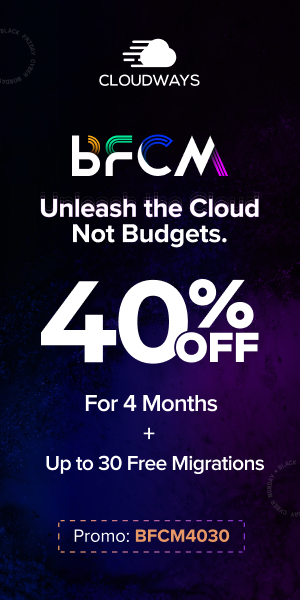Top Student Loan Apps for Easy Borrowing

In an era where technology permeates every aspect of our lives, the financial landscape has not been left untouched. Student loan apps have emerged as a vital tool for millions of students and graduates navigating the complexities of educational financing. These applications serve as a bridge between borrowers and lenders, simplifying the often daunting process of securing and managing student loans.
With the rising costs of education, which have outpaced inflation and wage growth, the need for accessible financial solutions has never been more pressing. The advent of student loan apps has transformed how individuals approach borrowing. Traditionally, students would rely on lengthy paperwork, in-person consultations, and a plethora of confusing terms and conditions.
However, with the introduction of mobile technology, students can now access information, apply for loans, and manage repayments directly from their smartphones. This shift not only enhances convenience but also empowers borrowers with the knowledge and tools necessary to make informed financial decisions. As we delve deeper into the benefits and features of these apps, it becomes clear that they are reshaping the student loan landscape.
Key Takeaways
- Student loan apps provide convenient access to managing and applying for student loans
- Benefits of using student loan apps include easy access to loan information, repayment tracking, and financial literacy resources
- Top features to look for in student loan apps include user-friendly interface, loan calculators, and budgeting tools
- When comparing different student loan apps, consider interest rates, repayment options, and customer reviews
- Applying for student loans using apps involves creating an account, submitting required documents, and monitoring application status
Benefits of Using Student Loan Apps
One of the most significant advantages of utilizing student loan apps is the convenience they offer. Students can apply for loans at any time and from anywhere, eliminating the need for physical visits to banks or financial institutions. This flexibility is particularly beneficial for busy students who juggle classes, part-time jobs, and extracurricular activities.
With just a few taps on their smartphones, they can access a wealth of information about different loan options, interest rates, and repayment plans. Moreover, many student loan apps provide personalized recommendations based on individual financial situations. By inputting their income, expenses, and educational goals, users can receive tailored advice on which loans to consider.
This level of customization helps students make informed choices that align with their long-term financial health. Additionally, some apps offer budgeting tools that allow users to track their spending and savings, further enhancing their financial literacy and management skills.
Top Features to Look for in Student Loan Apps

When selecting a student loan app, certain features can significantly enhance the user experience and overall effectiveness of the application. One essential feature is a user-friendly interface that simplifies navigation. A well-designed app should allow users to easily access information about loan options, interest rates, and repayment terms without feeling overwhelmed by complex jargon or cluttered layouts.
Another critical feature is the ability to compare different loan products side by side. This functionality enables users to evaluate various lenders based on interest rates, repayment terms, and borrower benefits. Additionally, some apps incorporate educational resources such as articles, videos, and calculators that help users understand the implications of borrowing and repayment.
These resources can demystify the loan process and empower borrowers to make informed decisions. Furthermore, security features are paramount when dealing with sensitive financial information. Look for apps that utilize encryption technology to protect personal data and offer multi-factor authentication for added security.
This ensures that users can manage their loans with peace of mind, knowing that their information is safeguarded against potential breaches.
Comparison of Different Student Loan Apps
| Student Loan App | Interest Rate | Loan Term | Minimum Credit Score |
|---|---|---|---|
| App A | 5% | 10 years | 650 |
| App B | 4.5% | 15 years | 680 |
| App C | 6% | 8 years | 620 |
The market is saturated with student loan apps, each offering unique features and benefits tailored to different user needs. For instance, one popular app is SoFi, which not only provides student loans but also offers refinancing options for existing loans. SoFi stands out due to its competitive interest rates and additional perks such as career coaching and networking opportunities for borrowers.
Another noteworthy app is Earnest, which focuses on personalized loan options based on individual financial profiles. Earnest allows users to customize their repayment plans by adjusting monthly payments or choosing between fixed or variable interest rates. This flexibility appeals to borrowers who want more control over their financial commitments.
On the other hand, apps like College Ave specialize in providing a wide range of loan products specifically designed for undergraduate and graduate students. College Ave’s platform is user-friendly and offers a straightforward application process, making it an attractive option for first-time borrowers. Each app has its strengths and weaknesses; therefore, potential borrowers should carefully assess their specific needs before making a choice.
How to Apply for Student Loans Using Apps
Applying for student loans through apps typically involves a streamlined process designed to minimize hassle and maximize efficiency. Most applications begin with creating an account where users input basic personal information such as name, address, social security number, and income details. This initial step is crucial as it helps the app tailor loan options based on the user’s financial profile.
Once registered, users can explore various loan products available through the app. They can compare interest rates, repayment terms, and eligibility requirements before selecting a loan that best fits their needs. After choosing a loan option, users will need to provide additional documentation such as proof of enrollment in an educational institution or income verification if applicable.
Many apps allow users to upload documents directly through the app, further simplifying the process. After submitting the application, users can track its status in real-time through the app interface. This transparency is beneficial as it keeps borrowers informed about any additional steps required or potential delays in processing their applications.
Once approved, users can review their loan agreement before finalizing the acceptance of funds.
Tips for Managing Student Loan Repayments

Managing student loan repayments can be daunting; however, several strategies can help borrowers navigate this responsibility effectively. First and foremost, creating a budget is essential. By tracking income and expenses meticulously, borrowers can allocate funds specifically for loan repayments while ensuring they meet other financial obligations.
Many budgeting apps integrate seamlessly with student loan apps, allowing users to monitor their overall financial health in one place. Another effective strategy is to explore repayment options available through federal loans or private lenders. Federal loans often come with flexible repayment plans such as income-driven repayment (IDR) plans that adjust monthly payments based on income levels.
Borrowers should familiarize themselves with these options to determine which plan aligns best with their financial situation. Additionally, making extra payments when possible can significantly reduce the total interest paid over the life of the loan. Even small additional payments can make a difference in principal reduction and shorten the repayment term.
Borrowers should also consider setting up automatic payments through their loan servicer or app to ensure timely payments while potentially qualifying for interest rate reductions offered by some lenders.
Potential Risks of Using Student Loan Apps
While student loan apps offer numerous benefits, there are inherent risks that borrowers should be aware of before diving into this digital landscape. One significant concern is data security; as these apps require sensitive personal information, any breach could lead to identity theft or financial fraud. Users must ensure they choose reputable apps with robust security measures in place.
Another risk involves misinformation or lack of comprehensive understanding regarding loan terms and conditions. Some apps may present information in a way that oversimplifies complex financial concepts or fails to highlight potential pitfalls associated with certain loans. Borrowers should approach these tools with caution and supplement their research by consulting financial advisors or educational resources provided by reputable organizations.
Additionally, reliance on technology can lead to complacency in understanding one’s financial obligations fully. Borrowers may become overly dependent on app notifications or automated features without actively engaging in their financial planning process. It’s crucial for users to remain proactive in managing their loans rather than solely relying on technology to guide them.
Conclusion and Final Recommendations
As we navigate an increasingly digital world, student loan apps represent a significant advancement in how borrowers approach financing their education. The convenience they offer cannot be overstated; however, it is essential for users to remain vigilant about security risks and ensure they fully understand their financial commitments. By leveraging the benefits of these applications while maintaining an active role in managing their finances, borrowers can make informed decisions that positively impact their long-term financial health.
In selecting a student loan app, individuals should prioritize features that align with their specific needs—whether it be ease of use, comprehensive comparison tools, or robust educational resources. Furthermore, staying informed about repayment strategies and potential risks will empower borrowers to navigate their student loans effectively. Ultimately, while technology continues to evolve in the realm of finance, informed decision-making remains paramount in achieving financial stability post-graduation.
FAQs
What are student loan apps?
Student loan apps are mobile applications that help students manage and repay their student loans. These apps often provide features such as loan tracking, payment reminders, budgeting tools, and loan refinancing options.
How do student loan apps work?
Student loan apps work by allowing users to link their student loan accounts, track their loan balances and interest rates, set up payment reminders, and explore options for refinancing or consolidating their loans. Some apps also offer budgeting tools to help users manage their finances and make timely loan payments.
What are the benefits of using student loan apps?
Some benefits of using student loan apps include the ability to easily track and manage loan balances, receive payment reminders, explore refinancing options, and access budgeting tools to help stay on top of loan payments. These apps can also provide valuable resources and information for managing student loan debt.
What are some popular student loan apps?
Some popular student loan apps include SoFi, Earnest, CommonBond, and Credible. These apps offer a range of features such as loan tracking, payment reminders, refinancing options, and budgeting tools to help students manage their loans more effectively.
Are student loan apps free to use?
Many student loan apps are free to download and use, but some may charge fees for certain services such as loan refinancing or consolidation. It’s important to review the terms and fees associated with each app before using it to ensure it meets your needs and budget.








